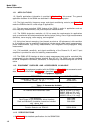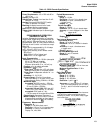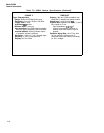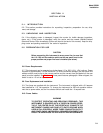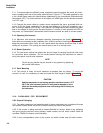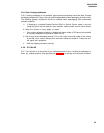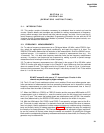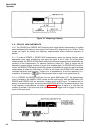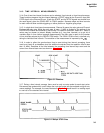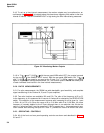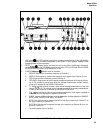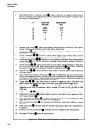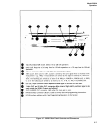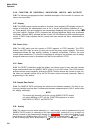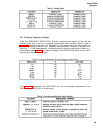
Model 5328A
Operation
Figure 3-1. Measuring Linearity
3-9. PERIOD MEASUREMENTS
3-10. The PERIOD and PERIOD AVG functions allow single period measurement or multiple
period averages to be made on input signals into Channel A for frequencies up to 10 MHz. These
modes are useful for making low frequency measurements where maximum resolution is
desired.
3-11. To make a PERIOD or PERIOD AVG measurement, select the desired function, select
appropriate input signal conditioning, and apply the signal to the A input. For single period
measurements, the RESOLUTION switch scales the time base frequency which determines the
resolution of the measurement. For optimum resolution, select N=1. Other N values may be
desirable to prevent display overflow or to get rid of unstable digits. For PERIOD AVG measure-
ments, the RESOLUTION switch selects the number of periods over which the period average
measurement is made (the time base is 10 MHz for this case). the PERIOD AVG mode gives
increased resolution and accuracy. Trigger error is decreased by N and the resolution is in-
creased by N (resolution =
~.
The measurement time is equal to the period times N.
3-12. In PERIOD and PERIOD AVG with the rear panel ARM switch OFF, the measurement
cycle is initiated by the SAMPLE RATE control and the input signal. With the ARM switch ON,
PERIOD and PERIOD AVG are armed by a trigger event at the B input. To measure the fre-
quency of a tone burst signal, use arming and the PERIOD AVG (for increased resolution over
a low frequency measurement) as shown in Figure 3-2. Select N equal to or less than the
number of periods in the tone burst and adjust Channel B trigger level to trigger on the first
cycle of the input signal.
Figure 3-2. Tone Burst Measurement
3-2



